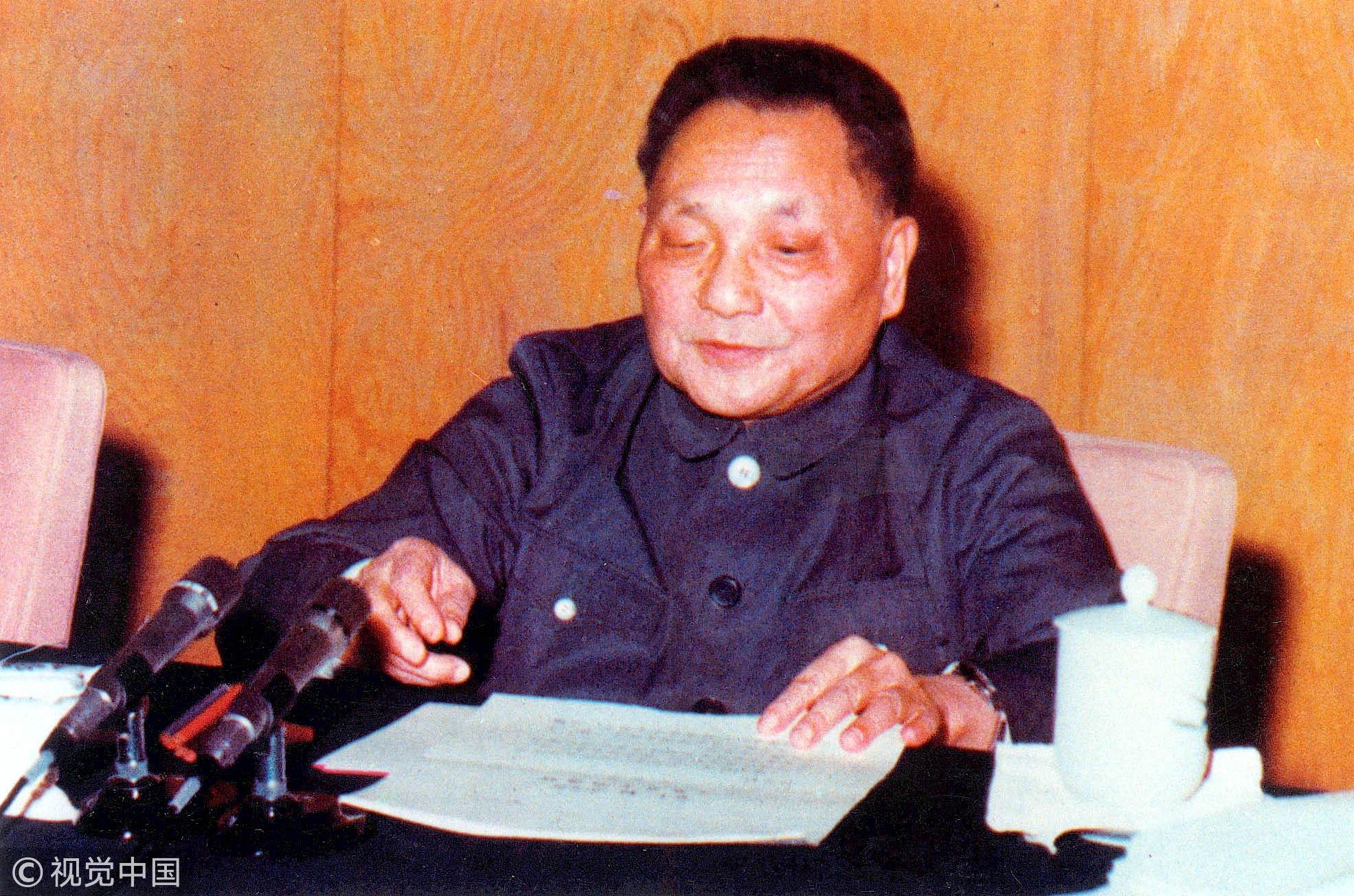
Opinions
10:56, 18-Dec-2018
Opinion: 40 years on – looking back, looking ahead
Updated
10:07, 21-Dec-2018
Sourabh Gupta

Editor's note: Sourabh Gupta is a senior fellow at the Institute for China-America Studies in Washington. The article reflects the author's opinions, and not necessarily the views of CGTN.
From December 18-22, 1978, the third plenum of the 11th Central Committee of the Communist Party of China (CPC) was held in Beijing. At the plenum, it was declared that the top priority would be to achieve "socialist modernization" – that of agriculture, industry, science and technology, and national defense.
These modernizations would later come to be labeled as the famous "Four Modernizations." Of equal importance, it was resolved at the plenum that there would be a seismic shift in emphasis by which the correctness of policy would be judged.
Henceforth, that correctness would be measured whether the policy was facilitating or hindering the goal of "socialist modernization." To Mao Zedong's dictum of "seeking truth from facts," Deng Xiaoping adroitly added that practice would be the sole criteria of truth. Pragmatism, not dogma, was to be the order of the day.

Deng Xiaoping speaks at the 11th Central Committee of the CPC in Beijing, December 1978. /VCG Photo
Deng Xiaoping speaks at the 11th Central Committee of the CPC in Beijing, December 1978. /VCG Photo
The third plenum reforms set in train the astonishing economic re-opening of China, such that today the country stands on the cusp of graduating to developed country status. This time though, the opening would be on the Chinese peoples' terms, unlike that of the mid-19th century.
Along the way, in the short span of 40 years, the country has lifted more than a half-billion human beings out of poverty – one of the great achievements in modern human history. The third plenum communique and reforms, along with U.S. President Richard Nixon's opening to China, must surely rank among two of the five most important events in the international relations of the second half of the 20th century.
The successes of China's remarkable third plenum-inspired modernizations have been ascribed to a variety of factors.
Fundamentally, however, two were key: first, because the Party's reform process was embedded within a deeper political calculus of basic legitimacy of the Party's incumbency, the consensus for reform was broader, deeper and more durable.
And in this vein, secondly, the Party-led reforms which emphasized fiscal, financial and managerial decentralization were embedded in historical patterns of growth and development – imperial China's also having been a regionally-segmented economic entity held together by the center's iron control over personnel transfers and promotions.
This curbed the virus of patron-client politics from capturing the system and motivated ambitious local officials to innovate and experiment to reach for higher goals – both, for self and country.

Shenzhen City, south China's Guangdong Province, December 11, 2018. /VCG Photo
Shenzhen City, south China's Guangdong Province, December 11, 2018. /VCG Photo
Going forward, China stands on the cusp of a domestic transition just as consequential – and challenging – as that of four decades ago. The East Asian growth model has not made it easier for countries to make the shift from manufacturing and investment-led growth to services and consumption-led growth.
Each high-growth, manufacturing-intensive economy that has attempted it, notably Japan and South Korea, suffered a slowdown.
Exit from developing country status will also invite a groundswell of liberalization-related demands, both from within (civil society) and without (international trading partners). Beijing's leaders will require much political and economic ingenuity to navigate these challenges.
Judging by the dexterity with which their predecessors managed these challenges four decades ago, one would not discount the chances of the Party threading this needle successfully, yet again, in the decades ahead.
(Top image: A DHL delivery truck in China's financial hub Shanghai, 25 November 2007. /VCG Photo)
(If you want to contribute and have specific expertise, please contact us at opinions@cgtn.com.)

SITEMAP
Copyright © 2018 CGTN. Beijing ICP prepared NO.16065310-3
Copyright © 2018 CGTN. Beijing ICP prepared NO.16065310-3